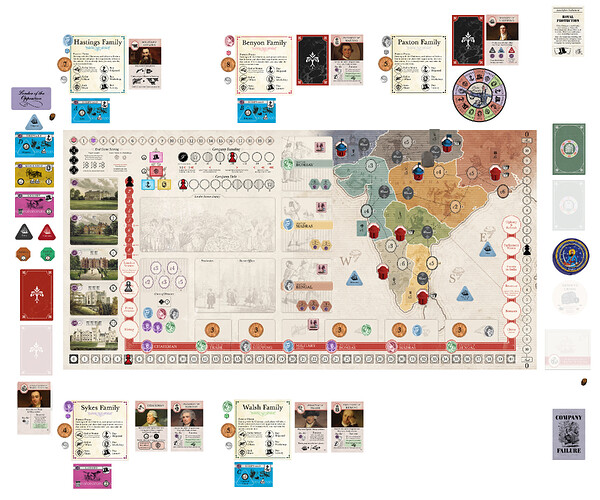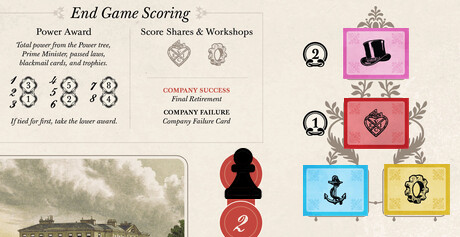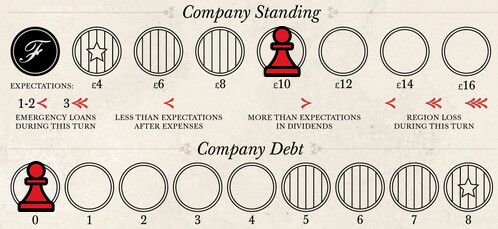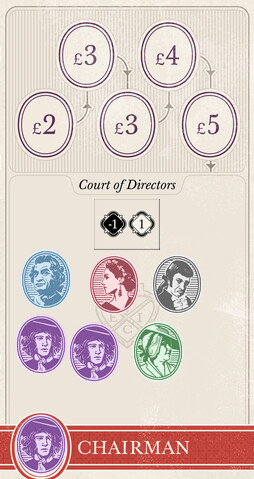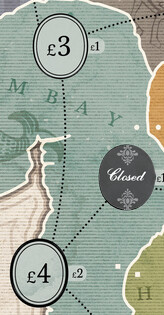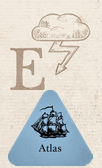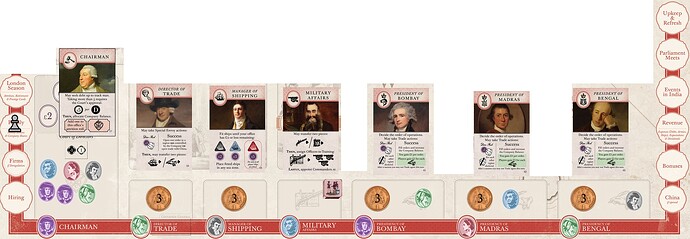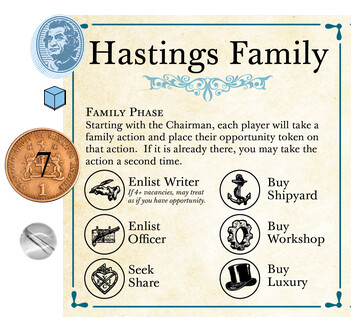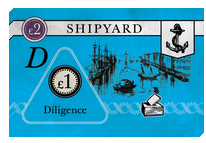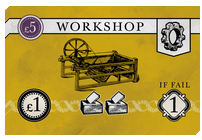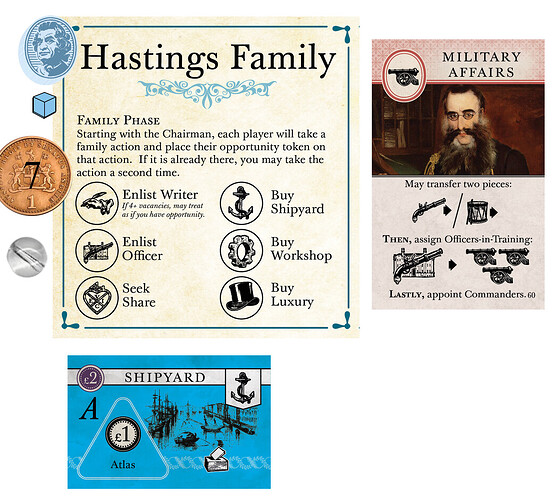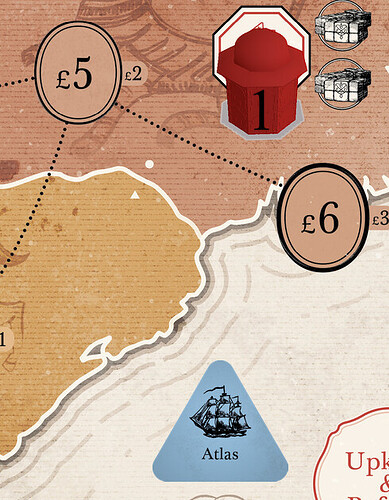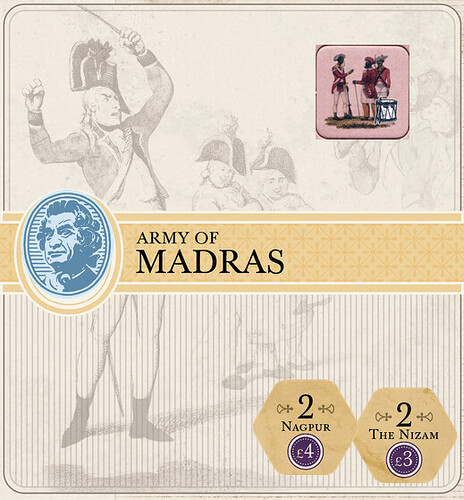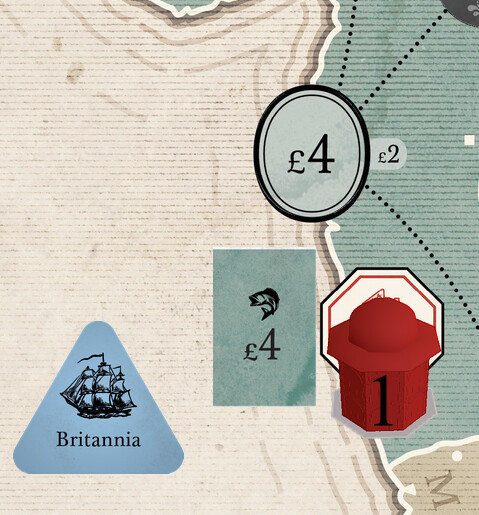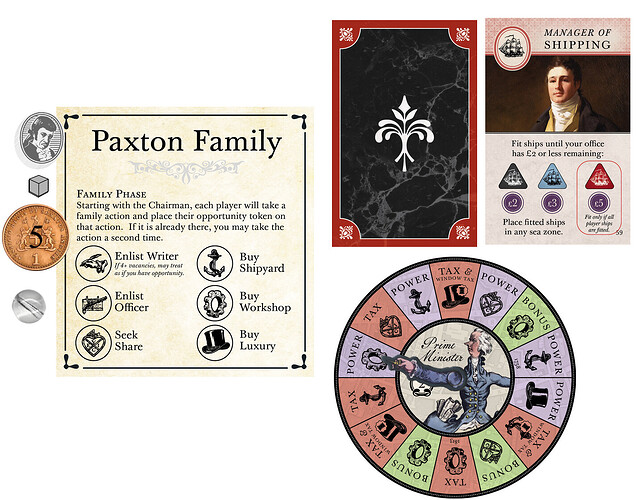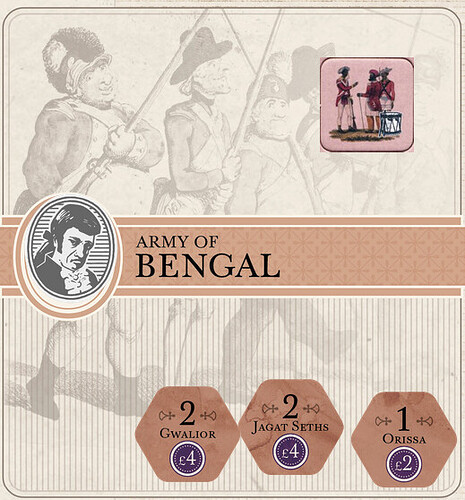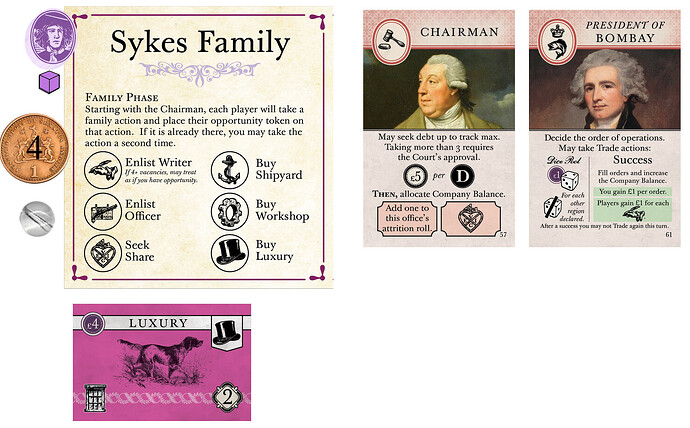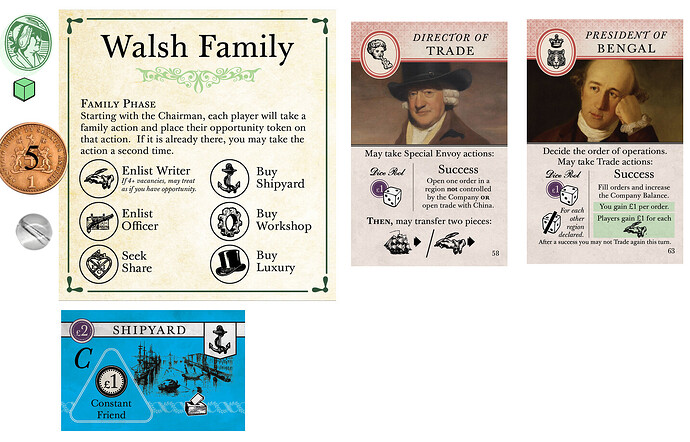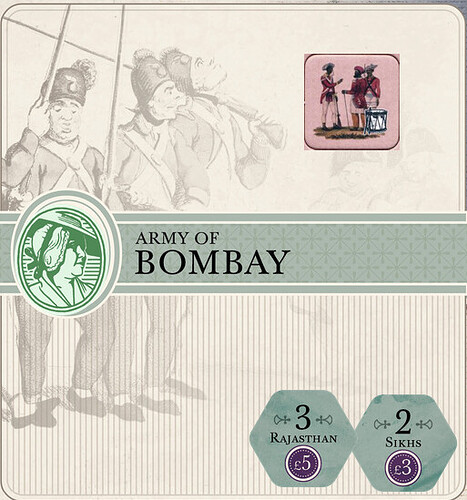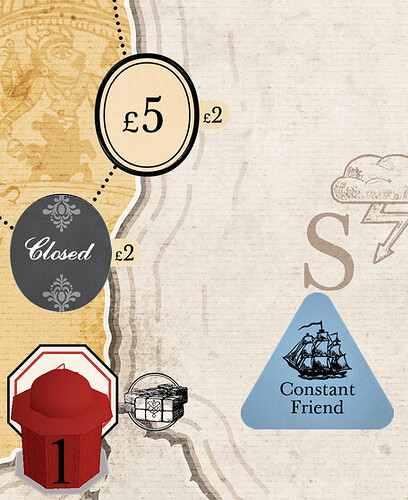Explaining the gameflow ribbon, based on the order things happen.
Skipping London Season for now (and in the game), first is Family actions:
As the image says, you pick an action and do the thing. Do the thing again on a consecutive turn, and you can do it twice.
Enlist writer means you get a junior family member into a position working for one of the three presidencies. If there are four or more Company position vacancies, you get an extra writer. The game starts with no vacancies. Writers can can some family money via graft only if that presidency successfully trades. They are also first in line for some promotions when positions become vacant.
This is a Walsh family writer in the Bombay presidency.
Enlist officer means you get a junior family member as an officer-in-training. They’ll be assigned to an army as an officer by the director of military affairs, directly increasing that army’s strength by the same amount as a regiment, and potentially able to share in loot from successful deployments.
Seek share means you pay 2 to 5 pounds to get on the shares track. cheaper slots are further back in the queue. Buying shares is the main way to reduce company debt, and potentially gets you a bigger share of dividends and VP. Or negative VP if the company fails.
Buy shipyard costs 2 pounds for an unfitted ship. If that ship gets fitted by the manager of shipping (for 3 company pounds), the manager of shipping will assign it to a sea zone, it will increase the maximum number of trades that presidency can make, and it will bring in 1 pound income to the family owning it as long as the ship is still sailing - they can get damaged. Also provides 1 vote (the ballot box icon) and a shipping icon (for endgame power).
Buy workshop means you start a side business. Costs 5 pounds, brings in 1 pound income. 2 votes, 1 VP only if company fails, and 1 industry icon.
Buy luxury costs 4 pounds, gives 2 VP. Also one window for tax, and 1 social standing icon.
The firms step is completely ignored for this game.
Hiring is when vacant positions get filled. There are rules about nepotism and priority, but we can skip that all for now because no positions are vacant.
Chairman has a big role, but no baked-in graft. In the chairman step, first decide how much debt to take on. Every point of debt is 1 income upkeep to pay, and +5 to company funds. More than 3 debt at once requires a vote by the court of directors. Then assign ALL funds to the positions marked by coins, as you see fit. Positions that want funds are free to bribe you using family money, etc. This last point applies to every action taken by company roles: negotiate, bribe, and trade freely.
Director of trade is the first dice roller. Can take special envoy actions using funds assigned (starts with 3 pounds). 1 pound = 1 die, take as many actions as you like (and have money for), but there’s good reason to roll more than one die at a time, as you take only the best result - this applies to all similar actions:
Get at least 1 or 2 = success
Best is 3 or 4 = fail
Best is 5 or 6 = catastrophic failure - no further actions, and you lose the position - family member either dead or disgraced, position become vacant
Success on a special envoy action means you can open any one order on the map of India.
Then transfer up to two pieces - writers to different presidencies, ships to different seas.
Manager of shipping fits ships. Must have 2 pounds or less left when finished.
2 pounds for a ship that will only last 1 turn. 3 pounds for a family ship in a shipyard. Also, only if there are no family ships in shipyards, 5 pounds for a permanent company ship. All ships cost the company upkeep.
Military affairs doesn’t use company funds.
May transfer two pieces, officers and/or regiments, between armies. Then assign officers-in-training to armies. Then, appoint commanders: if the current commander is outnumbered by officers from a different family, or a commander position is vacant, and there’s an officer available from that army.
The three presidency positions are the main money earners, and each functions the same way.
First decide the order of operations. There are 3 roles here: the president, governor(s) if regions of India are company controlled, and the commander of the associated army.
The president themself may take any number of trade actions, using the same dice system. The number of dice rolled each time is the money spent minus the number of extra regions you want the trade action to span.
I think this example is the easiest way to explain the system. Orders start from the bold home port and can connect to any open orders by dotted lines. Capped by number of ships in the associated sea.
Success brings in the money and stops further trade attempts: company money equal to the filled orders, money from graft (in green) is 1 per filled order, and 1 to each writer who filled an order.
Governor actions I’ll cover when they come up.
Commanders may choose to deploy. Dice is number of regiments and officers and allies exhausted (so unable to defend later this turn), minus the strength of the defending region (tower, or towers if an empire). Can only deploy into the port region or an adjacent region if the port region is company controlled.
After deploying, roll for every officer - on a 6 they died.
Success brings in the loot: 4 pounds per tower level, plus the one-off bonus for the first time a region is looted, distributed evenly among commander, officers, regiments, and allies (loot going to the latter two effectively being lost). Clears unrest, opens closed orders.
China I’ll cover if it comes up.
Bonuses is when shipyards and workshops pay out.
Revenue is when company expenses are paid, 1 pound per debt, regiment, officer, and ship. Then company standing (expectations) is checked. In the first turn, if the company doesn’t have at least 10 pounds left after expenses, it is perceived as failing, and standing falls. Then if there is money to spare, the Chairman may pay out dividends to shareholders, which may increase standing.
Then (probably) shit hits the fan in India, which I’ll cover when we get to it.
Then parliament meets and a new law or crisis is voted on. The player with the ear of the prime minister, a very malleable fellow, has a lot of control over this step, but again, I’ll cover it when we get there.
Finally there’s a short upkeep phase.
